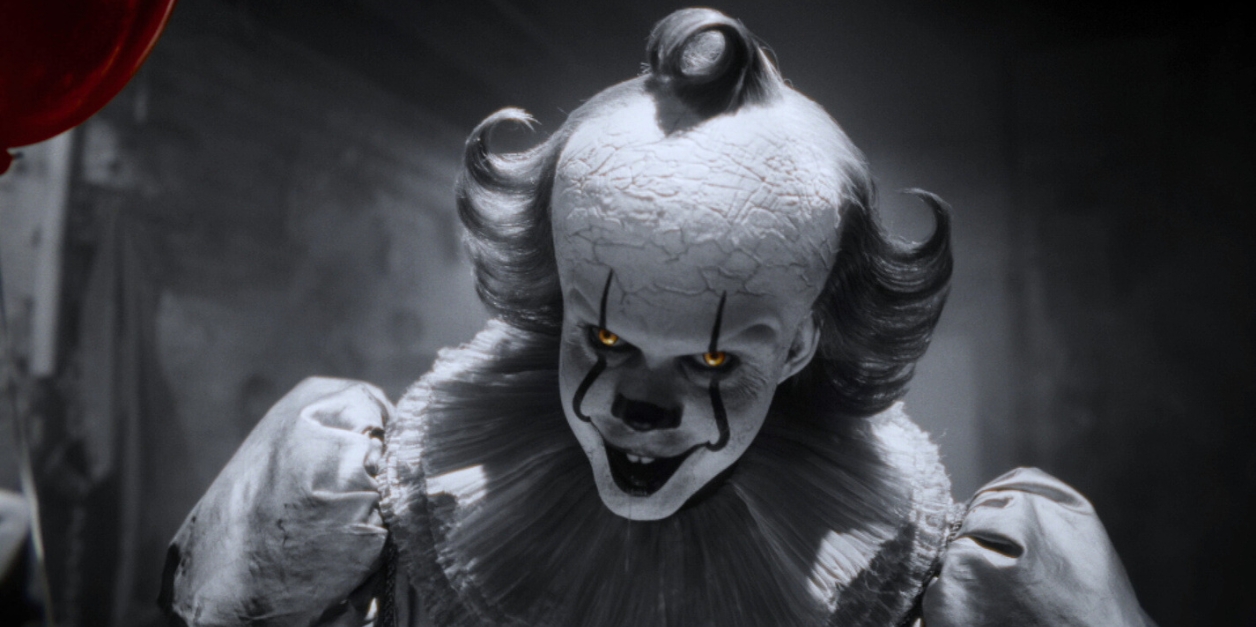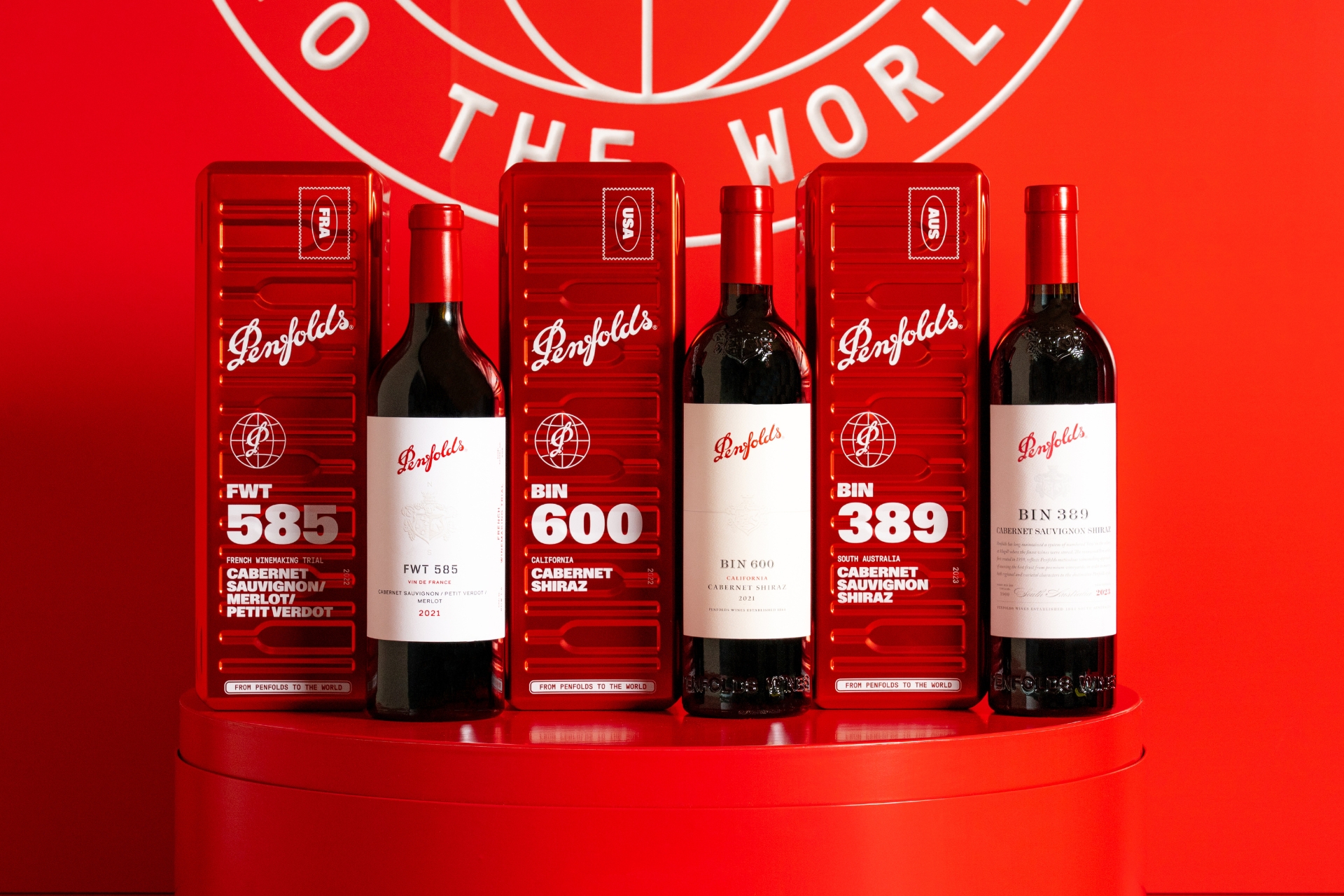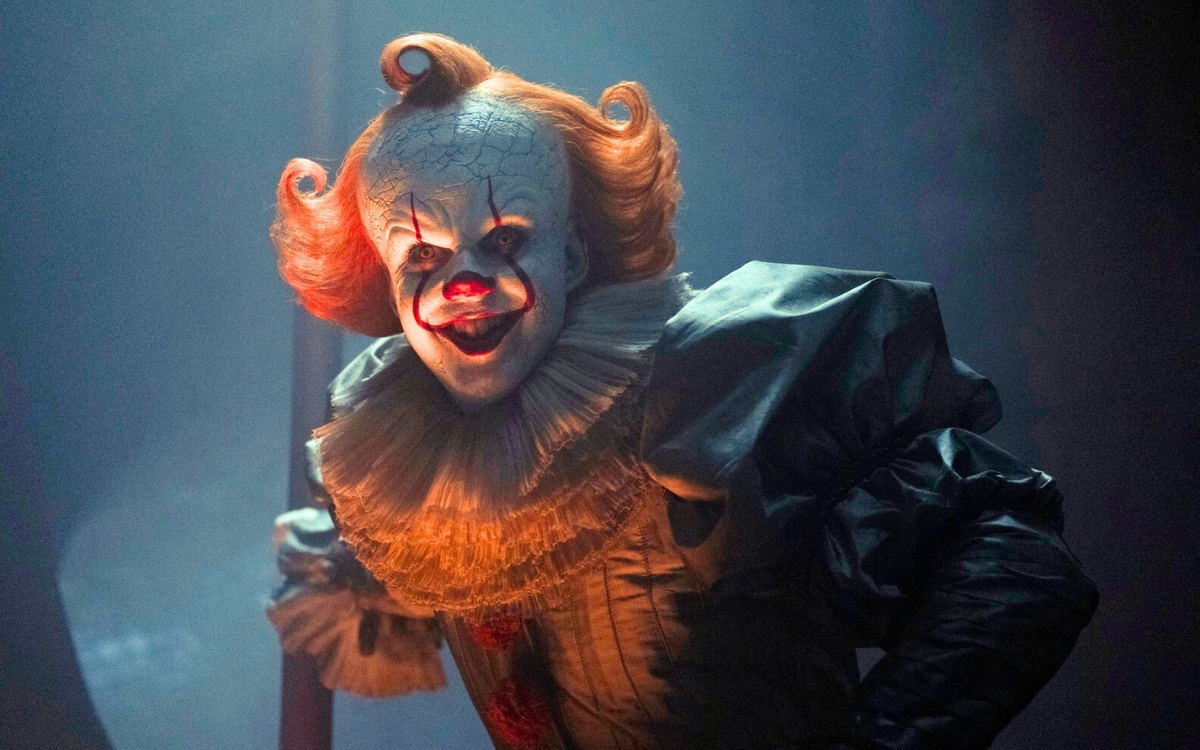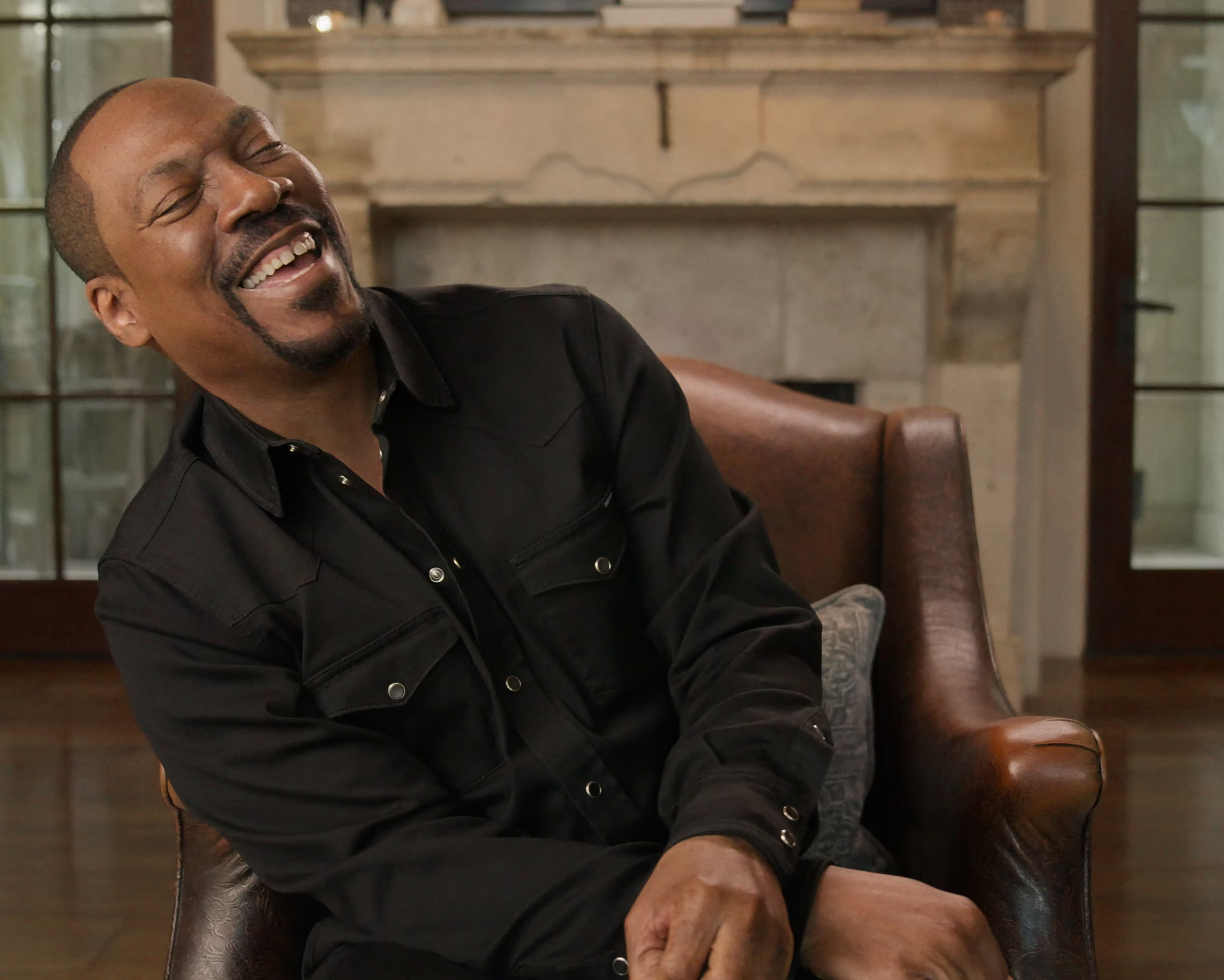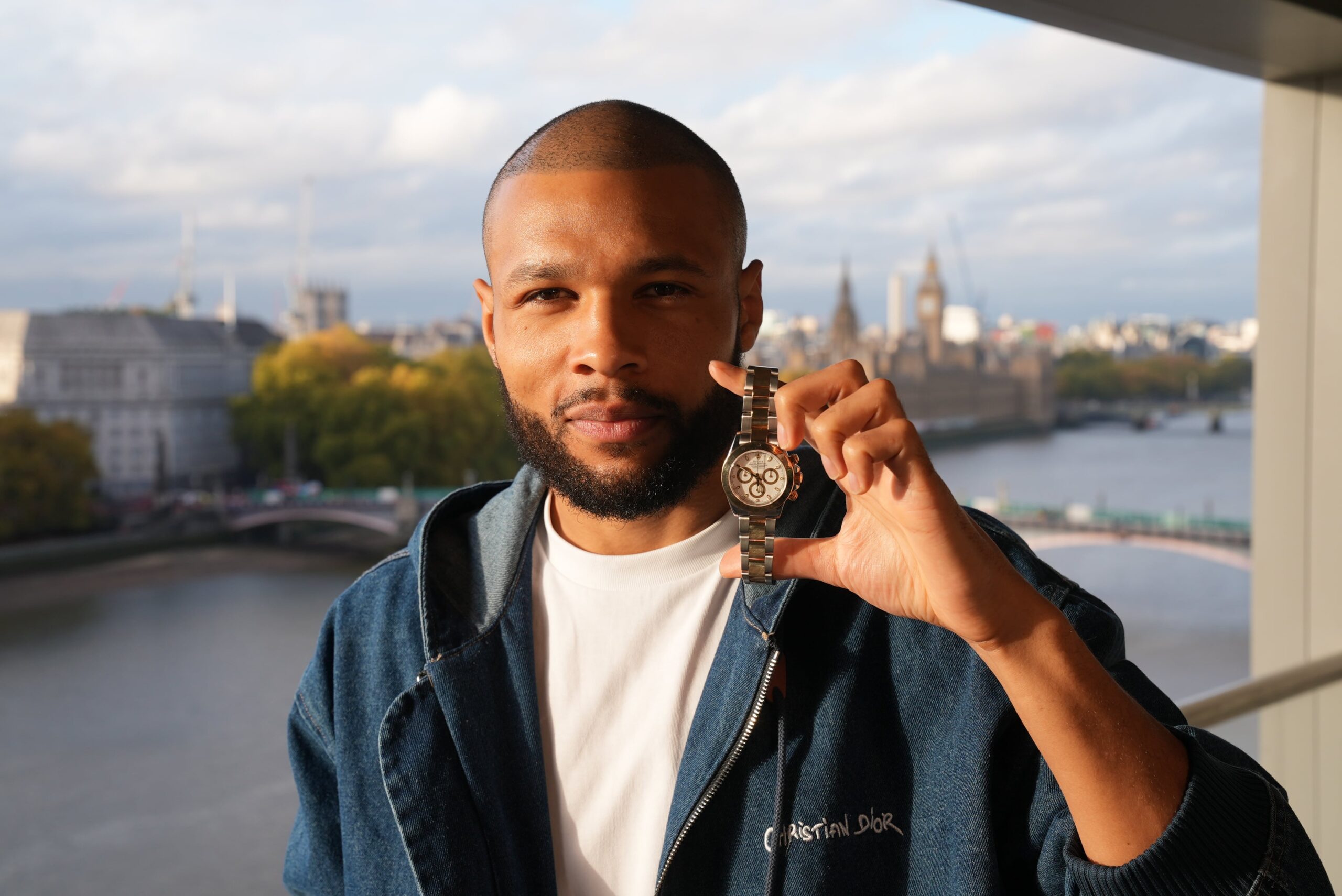The 6 best motorsport-inspired watches (from the Rolex Daytona to Steve McQueen’s Le Mans Monaco)
From iconic classics to new releases, these are the racing watches you need to know
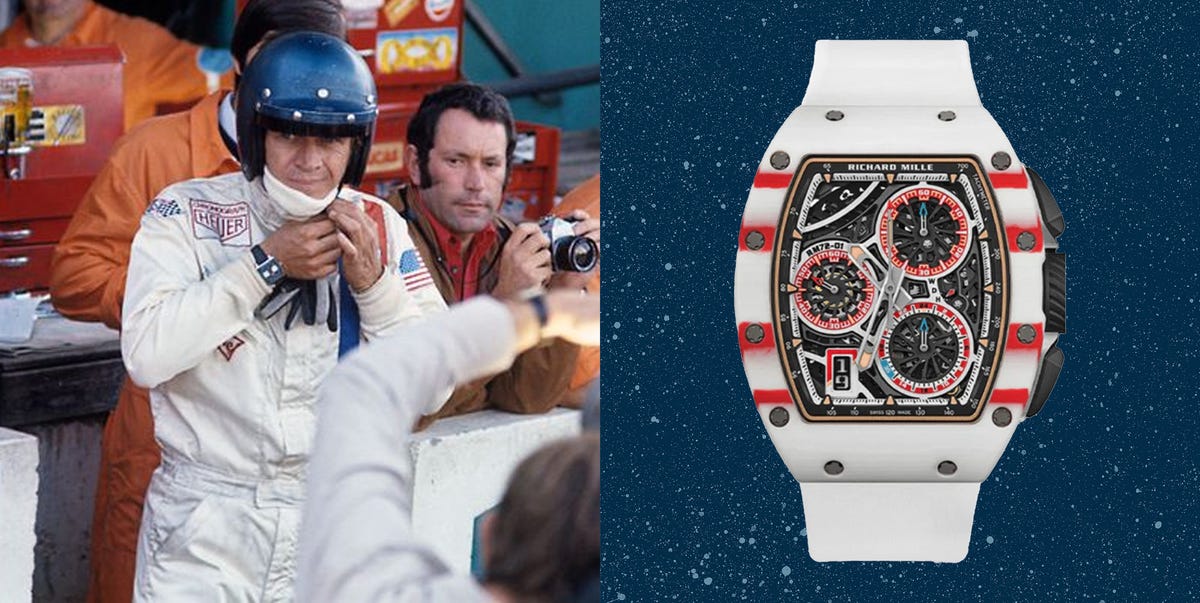
WATCHES AND RACING go hand in hand. Seeing as it’s a sport where every split second really counts, it makes total sense – just look at the 1971 Italian Grand Prix, for instance, when the three podium positions were separated by a mere 0.09 seconds. And, before we all had a stopwatch at our fingertips, the only way to track the time on the move was with whatever you had strapped to your wrist.
So, it makes sense why they’re two worlds which have been intertwined for the best part of a century. You’ve got the Rolex Daytona, which was launched in 1963 when the maison was the official timekeeper of the Daytona International Speedway. Then there’s TAG Heuer’s Monaco which was popularised by Steve McQueen in Le Mans (1971) and the Omega Speedmaster, a watch that was originally intended for racing but later became better known as the first watch on the moon – but that’s a story for another day.
Fast forward to 2025 and there’s a new wave of F1-inspired tickers on the scene which are a little more on the nose, shall we say. It could be IWC’s long standing partnership with the Mercedes team which has resulted in a fair few watches over the years – you may have seen one or two worn by Lewis Hamilton during his Merc’ tenure – or Richard Mille’s collab with driver Charles LeClerc which launched back in May – the watch in question is literally called the RM72-01 ‘Charles LeClerc’, and has a crown that resembles a tyre. Either way, these watches take the term automotive-inspired to a whole new horological level.
What makes a racing watch?
There’s a few details which make a racing watch a racing watch. The #1 function which sets them apart is the chronograph – which, put simply, is a built-in stopwatch. Usually they’re characterised by a stationary second hand, which is used to count seconds once you start timing, and three little dials in the middle of the face: one which shows you the actual IRL seconds (since the main seconds hand isn’t used to tell the time), and two which measure elapsed time, one for minutes and one for hours.
Then you’ve got the tachymeter – the numbers on the bezel (the outer ring that surrounds the glass cover) which are used to measure speed over a kilometre or a mile, depending on the watch. To use it, you simply start timing at the – you guessed it – start, and stop when the car reaches the one kilometre or one mile mark. The second hand will then tell you both the time passed and the kph or mph, respectively.
All of our picks below, from era-defining designs to recent F1 team collabs, have both.
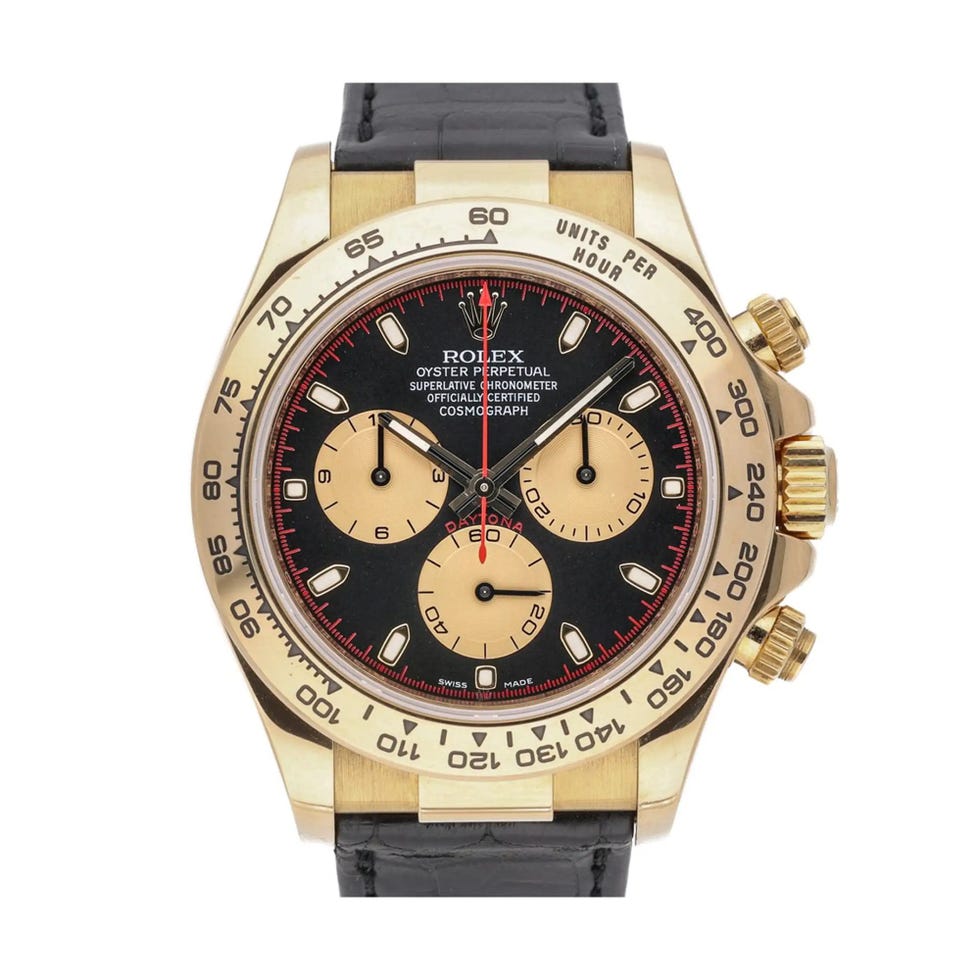
Rolex Daytona
The Daytona is perhaps the most iconic racing watch going. Not least because it’s been around since the sixties, but also because of its cultural relevance. It was actually popularised by actor Paul Newman which led to Rolex designing one named after him – the OG from Newman’s collection became America’s most expensive watch to be sold at auction for $17.75 million in 2017.
There’s a lot of different finishes out there, but they all come with the signature chronograph dials, tachymeter bezel and the trademark Daytona logo just below the centre post. More recently, the Swiss maison has introduced a see-through case back and ceramic bezel. As with all Rolexes, it’s pretty much impossible to buy one new, but you can expect to pay anywhere from £12k to £500k on the pre-loved market.
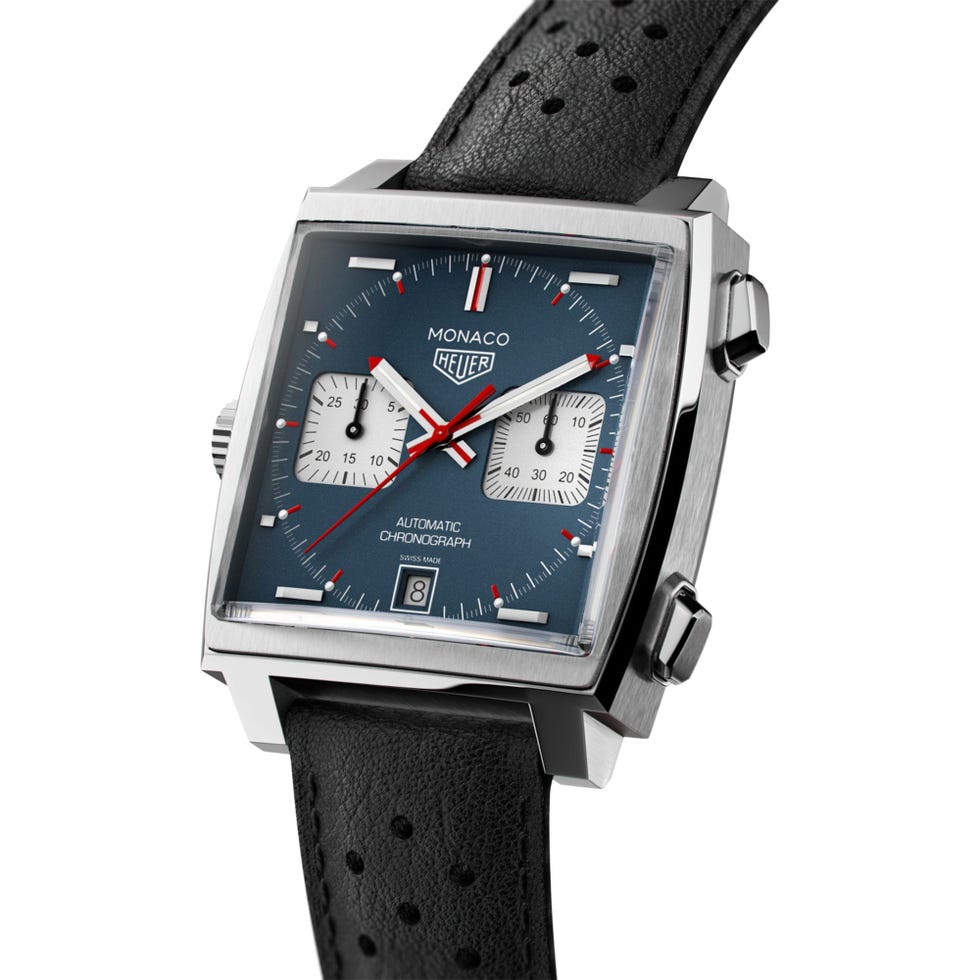
TAG Heuer Monaco Chronograph
When it was launched in 1969, the TAG Heuer Monaco was a world first – it was the earliest automatic chronograph housed in a square, water-resistant case. Like the Daytona, it gained traction thanks to a big name actor: this time, it was Steve McQueen who wore one in the 1971 movie Le Mans. Beyond the silver screen, it was also one of the first watches to be used for a brand deal with driver Jo Siffert who won two Formula One Grands Prix across 10 seasons.
The original has a navy face, contrast red details and white chronograph dials, but now there’s a few colour combos on offer, be it the collaboration with Gulf with its sunray dial and colourful stripes or the limited edition French Racing Blue take. The running theme across them all? The bold square shape.
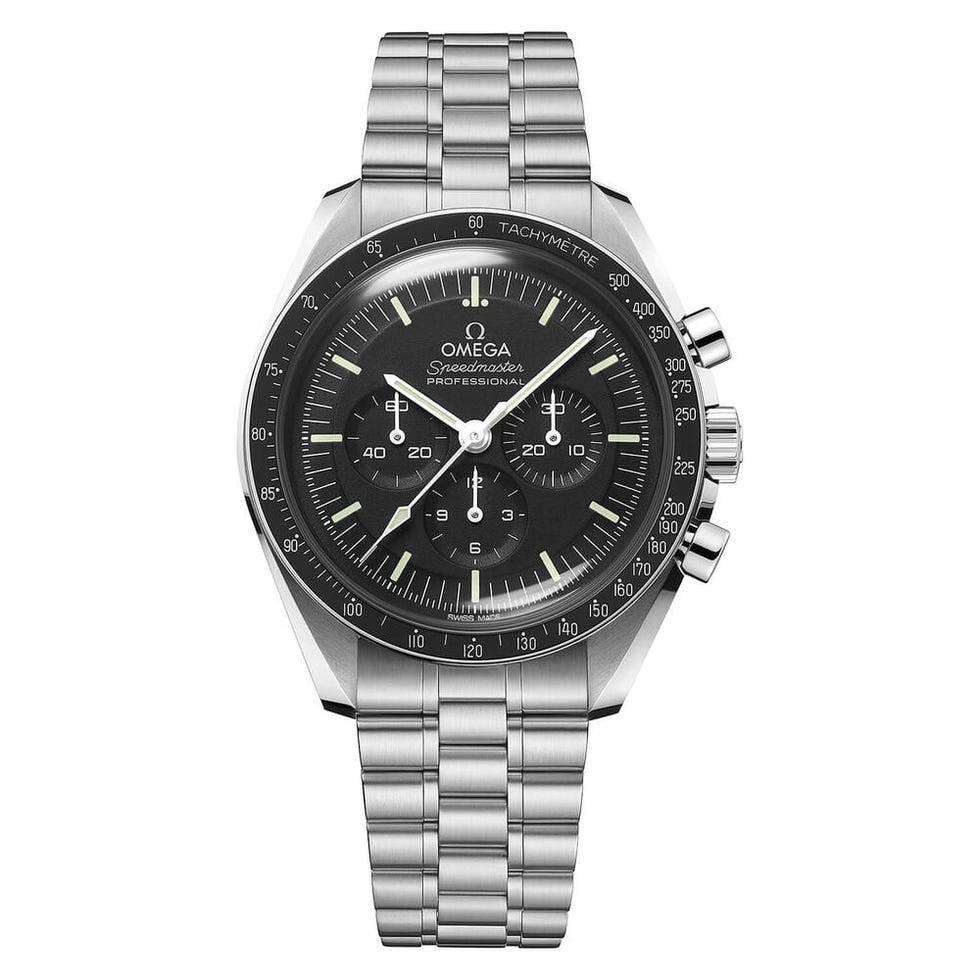
OMEGA Speedmaster Moonwatch 42mm Calibre 3861 Dial Chronograph Watch
Though the Speedmaster – or Speedy, for short – is best known as the first watch to make it to the moon, it was originally intended as a racing watch. Until it gained NASA’s seal of approval as a timepiece which could withstand the pressures of space, ultimately leading to Buzz Aldrin wearing one on the Apollo 11 mission, it was Belgian driver Willy Mairesse who was known for wearing one throughout his F1 career in the 1960s.
It delivers all of the race-day features a driver would need. Bold easy-to-read indices. A tachymeter (in fact, the Speedy was the first to move it to the bezel freeing up a little more space on the dial). And, of course, a precise chronograph you can trust – Omega has been the official timekeeper of the Olympic Games since the thirties, so you’d hope it’s a brand which knows its way around a stopwatch. Above all, it’s one of the best looking designs on the market.
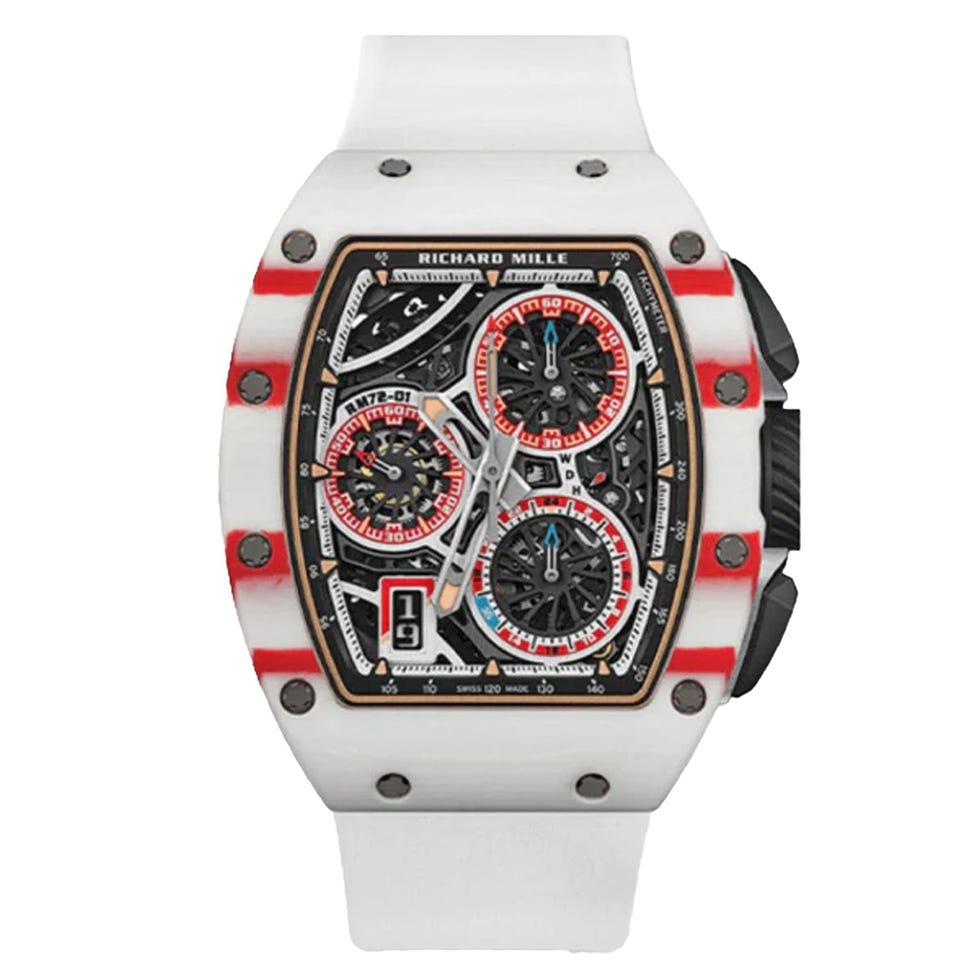
Richard Mille RM72-01 “Charles Leclerc” “Monaco” Automatic Flyback Chronograph RM72-01 TPT
Though Richard Mille is newer to the scene than some of its heritage contemporaries, the high end watchmaker offers some of the most technologically advanced designs in the world – and they come with the price to match, which ranges anywhere from £60k into the millions. As the current sponsor of Ferrari and McLaren, it’s only natural that a few of the timepieces are inspired by the racing world.
There’s the RM 50-03, a super-lightweight chronograph made in collaboration with McLaren while the Richard Mille RM72-01 “Charles Leclerc” is a recent limited edition release that was made in partnership with the eponymous driver. In the designer’s signature style it’s made with a skeleton case meaning you can see the movement in action, while the white quartz and red stripes references his Monegasque heritage and tyre-inspired crown is an obvious nod to the sport.
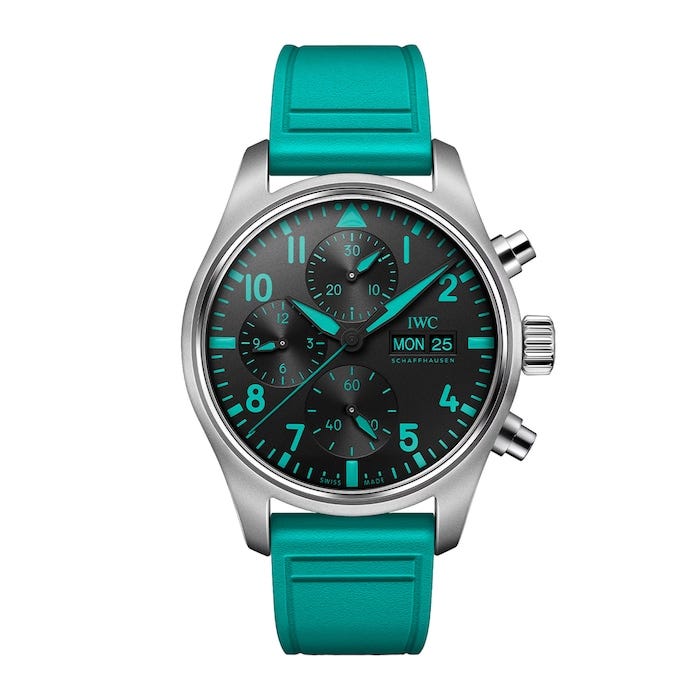
IWC IWC Pilot Chronograph Mercedes – AMG Petronas Formula One Team 41mm Mens Watch Black MPN: IW388108
If you’re a watch nerd, you might remember Lewis Hamilton’s appearance at the Miami Grand Prix wearing three watches in a stand against an F1 regulation banning drivers from wearing jewellry on the track. At the time, he was with Mercedes, so all of the watches he was wearing were by the team’s official sponsor IWC – and one of the three was this F1-themed Pilot’s Chronograph.
The silhouette is one of the brand’s signatures which has been reimagined with a bold neon green strap and markers. It’s a surprisingly classic take for an F1 team – and it’s one we’re very much on board with.
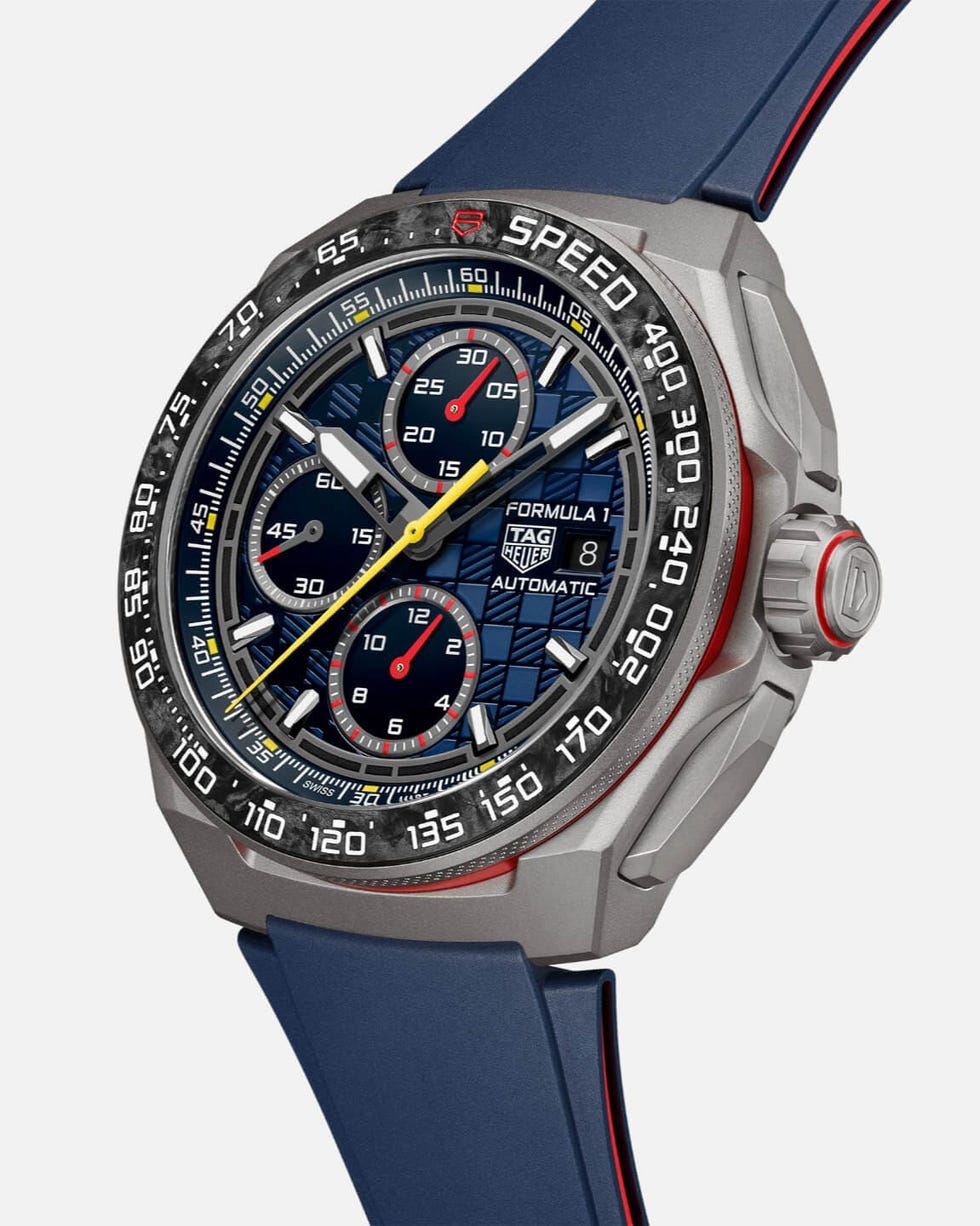
TAG Heuer Formula 1 Chronograph X Oracle Red Bull Racing Automatic, 44 mm, Titanium CBZ2080.FT8091
Red Bull is one of the best teams on the circuit, so it’s no surprise to see the Austrian megabrand link up with a watch label that’s just as highly regarded: TAG Heuer.
It combines the team’s racing colours, navy and red, with high tech details like a calibre 16 automatic movement, a grade 2 titanium case and an opalin dial, all finished off with the chronograph dials and speed-reader, naturally.
This story originally appeared on Esquire UK.
Related:
The inside story of Brad Pitt’s ‘F1’ watch (and the rest of the racing team’s wristwear)
An oral history of the TAG Heuer x Kith F1, the hottest watch of the moment















